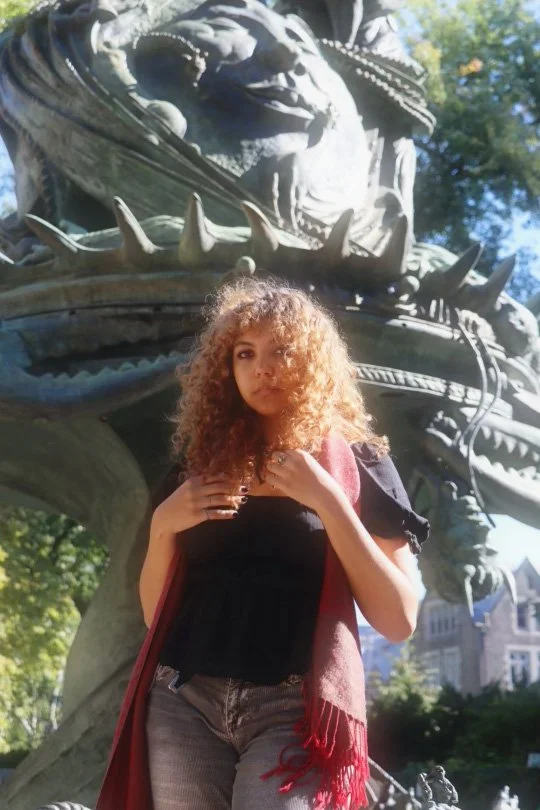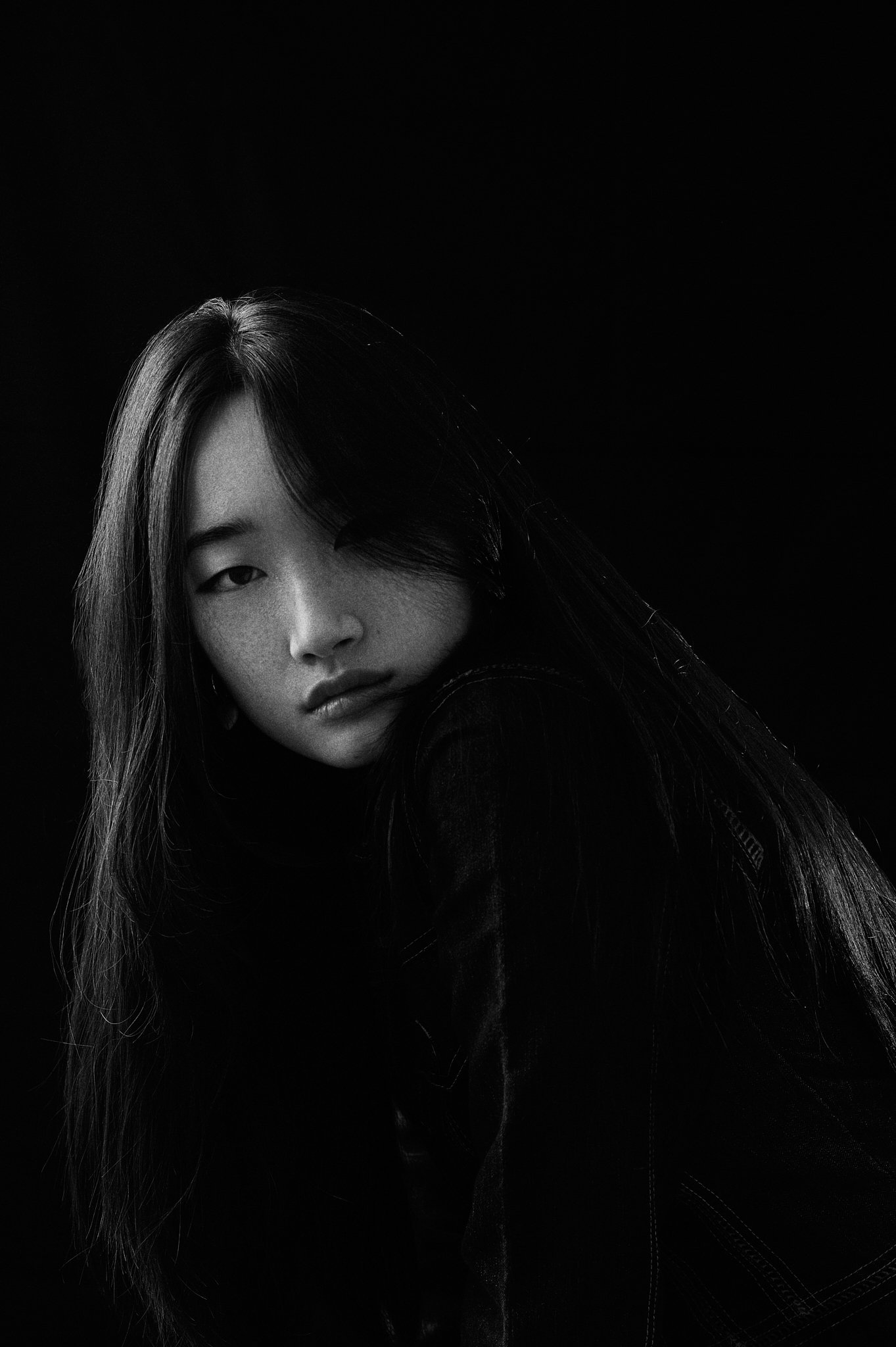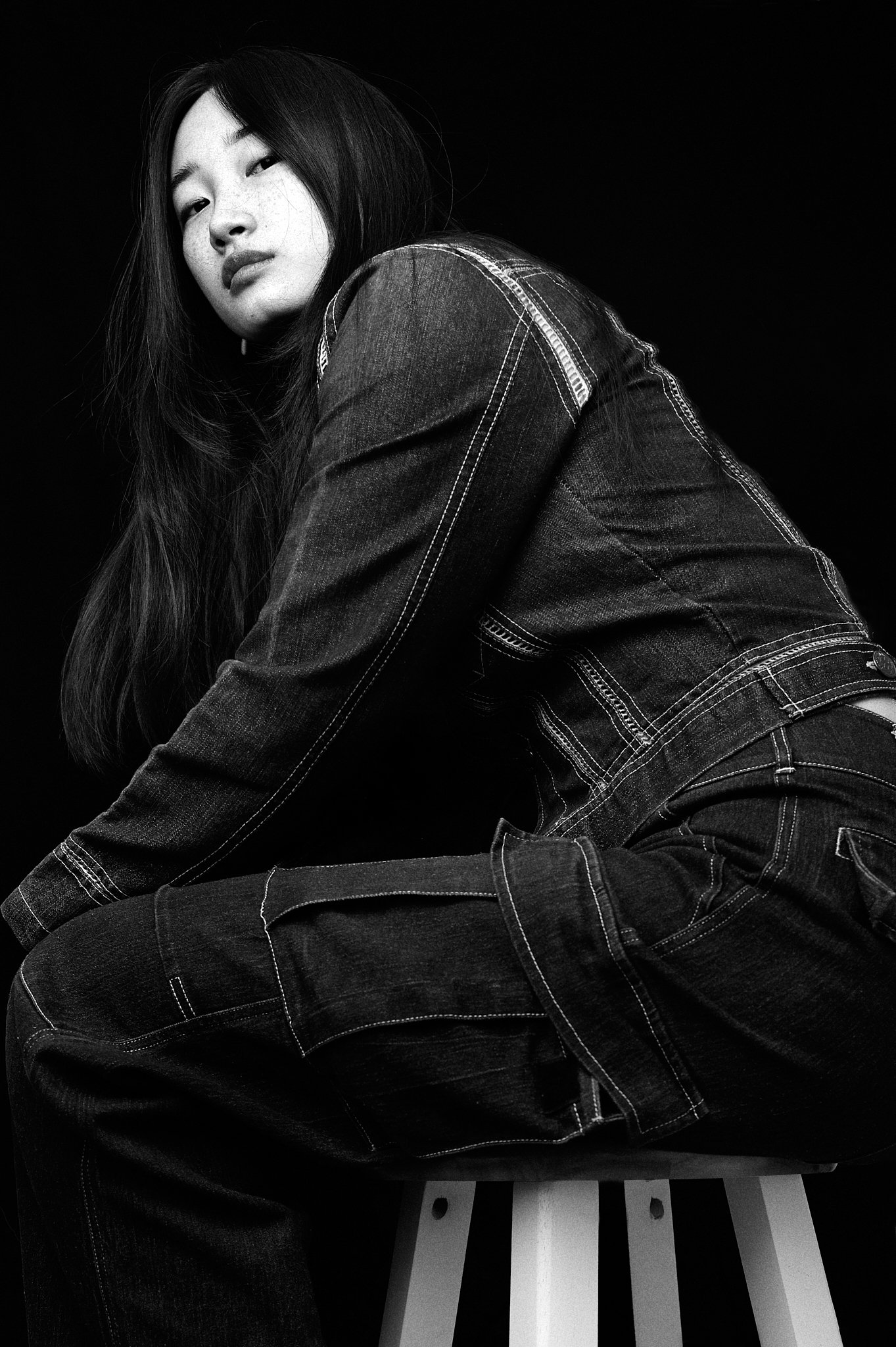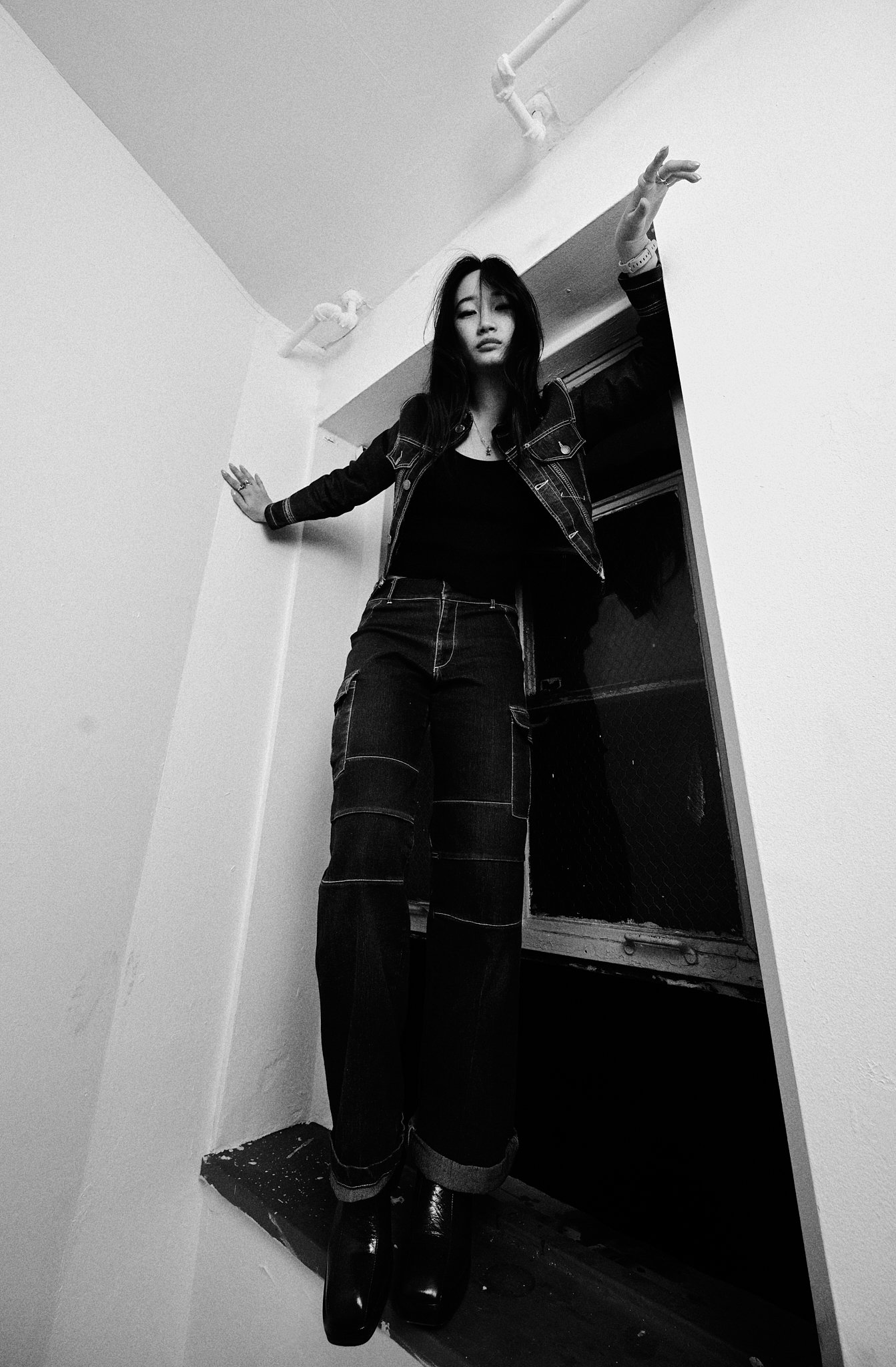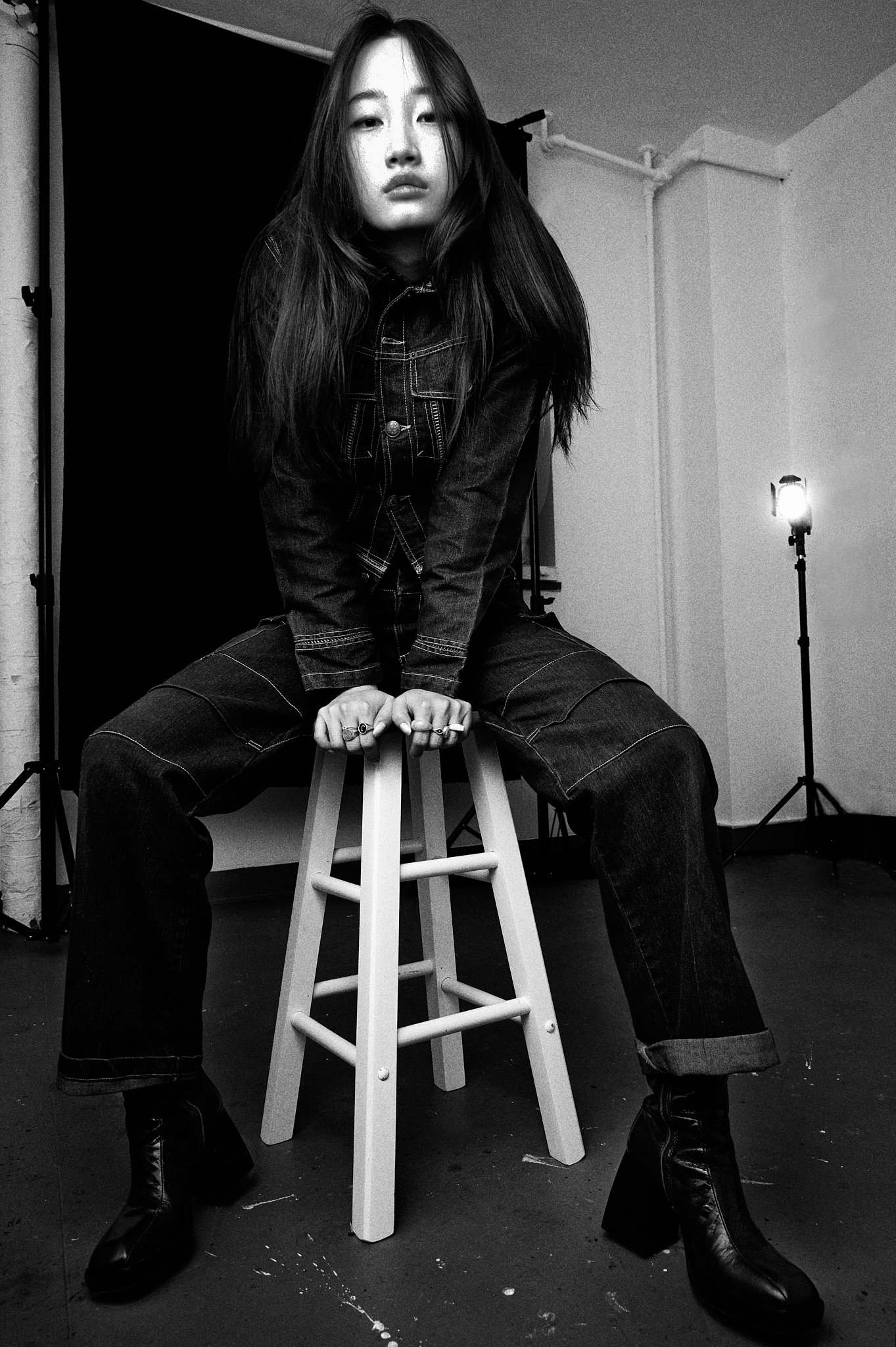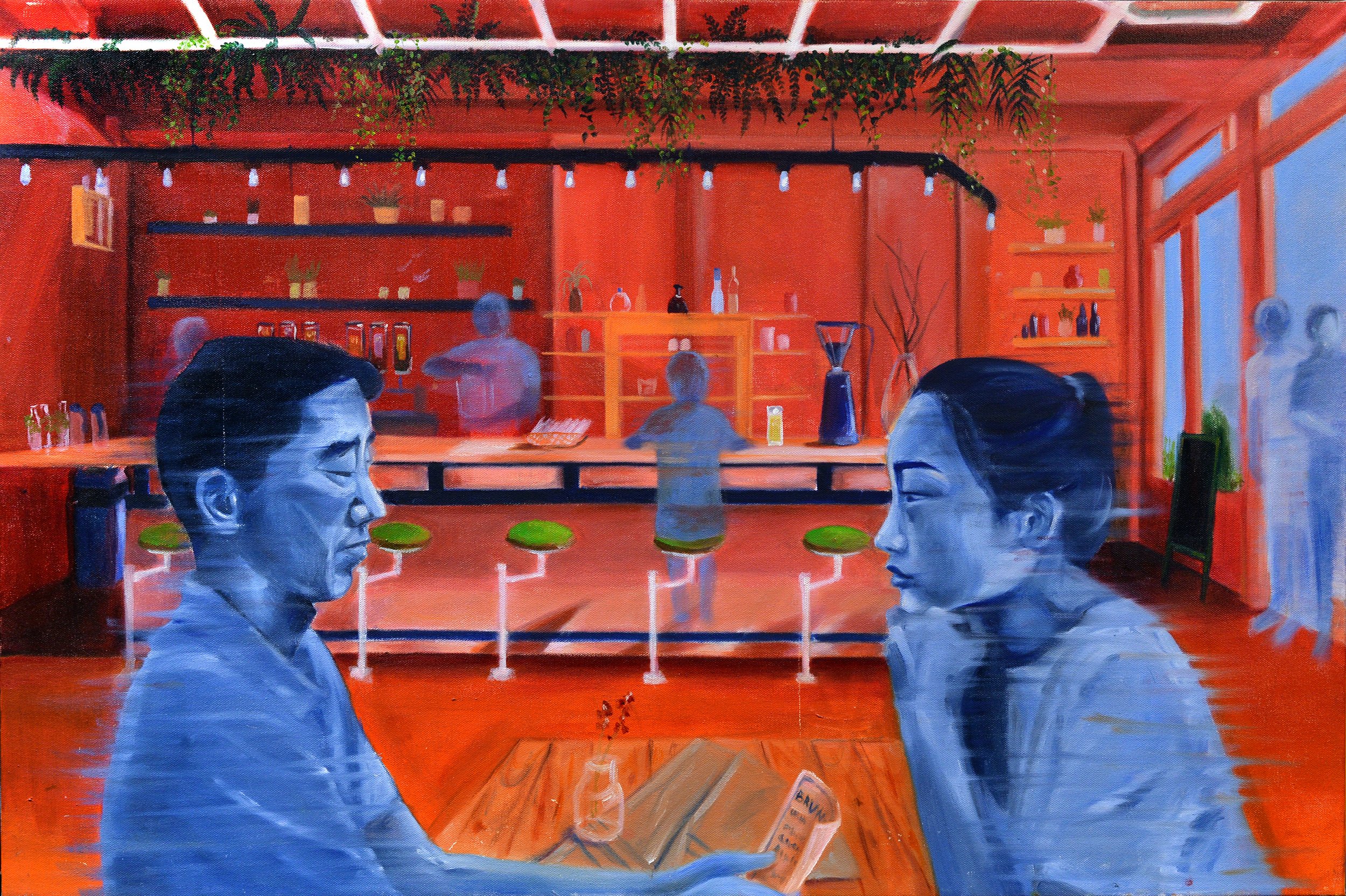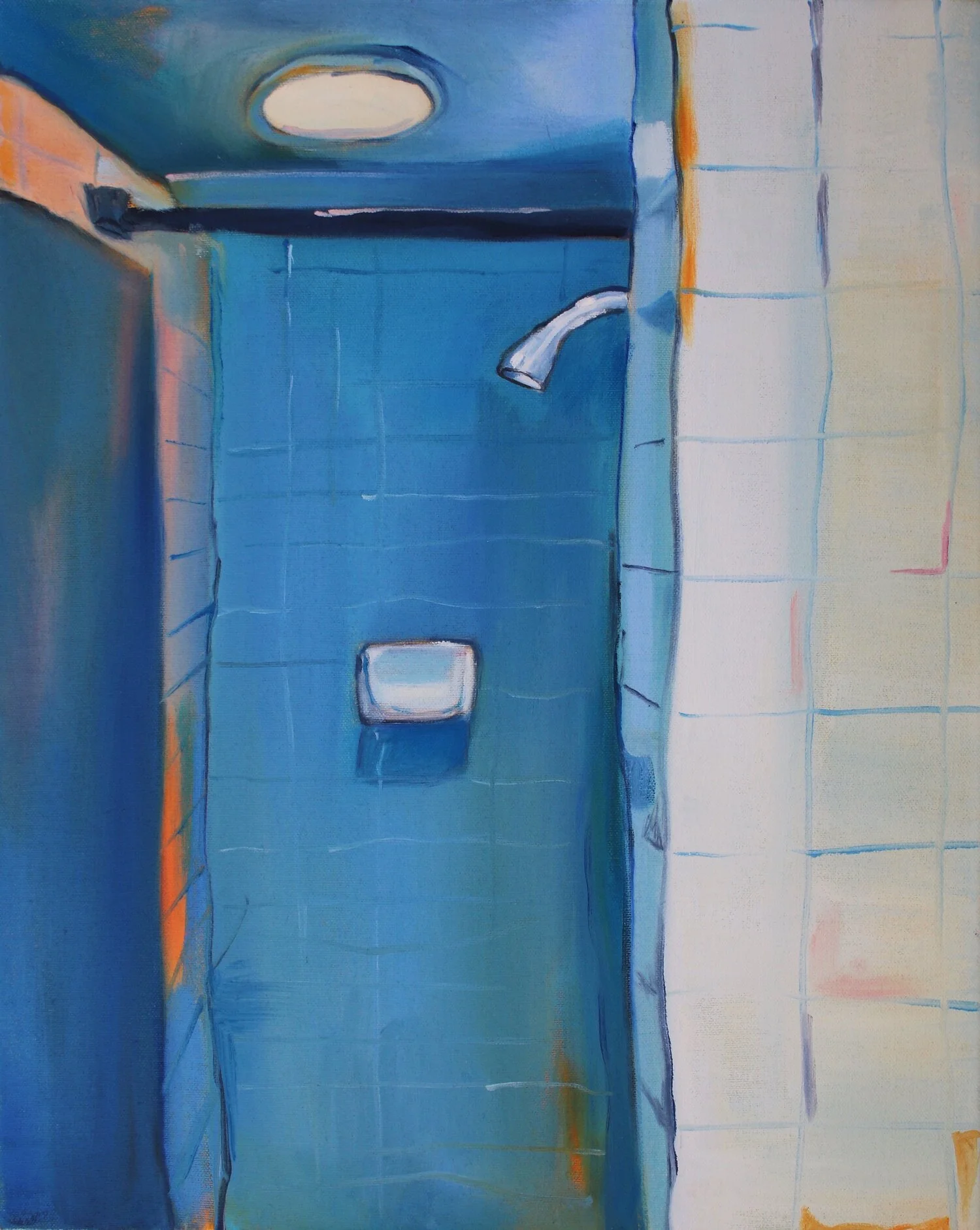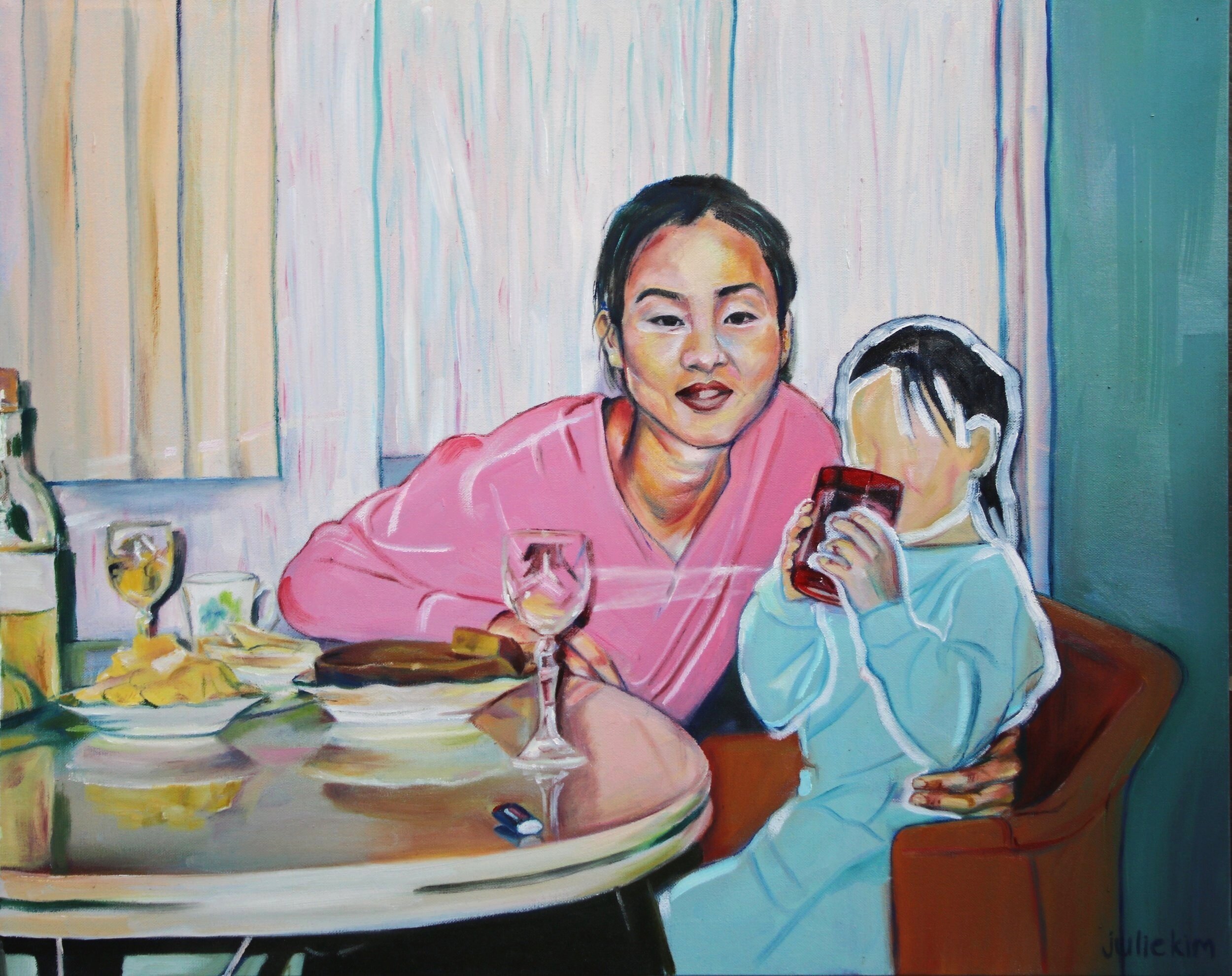Feature by Sabrina Bohn
Photos by Em Sieler
I met Julie Kim on a cool Saturday evening just as the sun had set, leaving the blue glow of night in its place. Julie had just come from a long day at work as a studio assistant for another artist. She was carrying a portfolio bag, had splatters of paint on her fingers, and possessed a quiet passion that permeated our whole discussion.
After attempting to go to a closed Joe’s Coffee, we ended up in the piano lounge in Lerner. It started off quiet, with only a couple of other people working around us, but as the evening progressed, people’s conversations around us grew louder, and someone started playing the piano. As Julie and I talked about her art, the ambiance–an aspect integral to many of her paintings–came through as she discussed her inspirations and the emotions behind her pieces.
Julie first encountered art at a young age, attending classes with a painter in her neighborhood. However, she became serious about art when she began attending Ashcan, a studio in New York, that was just a train ride away from her home in New Jersey. Every day after school, she would spend hours making art. “That was my first experience knowing that art is what I want to do,” Julie says.
She mostly drew and painted with acrylics as a child, but creating art at the studio drew her to oil painting, her main medium now. “When I have a paintbrush there's more room to let go and be free. I love building things up with color,” Julie expresses. “I also appreciate the waiting process as the paint dries. That's helped me to be more deliberate about what colors I want to put down and where.”
People Watch (2019)
Kate in Chicago (2020)
Julie not only built up her knowledge skills at this studio but also created lasting and memorable relationships. She met her best friend and now roommate, Kate, at the studio, who is featured in People Watch (2019) and Kate in Chicago (2020). Although Kate explores different realms of the human experience in her filmmaking, “People Watch was the first painting that embodied my creative motivations today and truly appealed to me as subject matter. That sparked the initial vision and ideas for a lot of my paintings now. The colorful lighting was all improvisation and gave me the courage to paint in make-believe things in the future based on my instinct and vision,” Julie says.
Working at Ashcan also gave Julie a feeling of independence and a sense of belonging in New York. In many of her pieces, including Remembering or holding onto disappearing moments in blue (2019), New York serves as an inspiration. “I really associate New York with the feeling of liberation,” Julie says. “There are so many unexpected things that happen every day in New York. Whenever you're walking, you don’t know if you'll see the people you pass ever again. I just think the crowd is a really interesting concept for me–being amongst so many different people yet not knowing who they are.”
Remembering or holding onto disappearing moments in blue (2019)
Remembering or holding onto disappearing moments in blue (2019) was also a piece that allowed Julie to elevate her creative process. In the piece, Julie and her dad sit in the restaurant The Butcher’s Daughter in West Village. Julie and her dad were never in this restaurant together, but Julie recalled that she imagined this scenario in her head and placed different photo references of her dad, herself, and the restaurant together. She feels that if she’s “just trying to replicate a picture, it becomes hard to be intuitive and fluid with brushstrokes and colors. Having different references and being the one to put it all together into one canvas makes it more natural.”
What these two pieces, along with much of Julie’s work, have in common is the centering of relationships, especially between two people in her life who she loves. When I asked about this theme, she simply stated, “I don't think it's intuitive for me to do anything else in terms of subject matter. The things that I really want to paint are the people I value and experiences I've had.”
Despite her love for New York, she also wanted to express the loneliness that comes with living in a big city. Julie wants to communicate “how lonely watching a world full of people can be.” Pieces that capture this feeling of immense solitude include Cold Shower (2020), which is a painting of a Furnald bathroom, where she lived her sophomore year. “I think that captures the loneliness I was talking about, but also feeling comfortable in solitude. That's an example of using colors to embody a mood because I would associate blue with cold, but it's also a color I really love.”
Cold Shower (2020)
However, during the first half of the pandemic, Julie faced a different kind of isolation in her home in suburban New Jersey. Although she felt detached and alienated from creating art, she began contemplating what she felt drawn towards making and consuming media that inspired her. She specifically mentioned the book The Lonely City by Olivia Lange. “It sent me on a trajectory of figuring out what it means to find your identity in a place,” Julie explained. “It really inspired me to think about the city as a character itself.”
In general, Julie feels very inspired by books, movies, music, and other artists. She describes how she deeply empathizes with characters in books and movies, getting completely looped up in the fictional person’s feelings and narratives. As for her artmaking process, Julie says this ability makes it really easy for her to imagine things that haven't even happened or imagine feelings that she’s never felt before.”
Another artist Julie feels inspired by is Julie Mehretu, a contemporary American artist, who she saw at an exhibition at the Whitney Museum last spring. Mehretu’s works are large-scale, abstract, and multi-layer landscape pieces. “Her art was life-changing,” Julie enthuses. “It's the opposite of what my paintings look like, but it was still such an immersive experience. Mehretu’s art pulls you in and makes you feel a part of something.”
Passionate about Mehretu’s work, Julie went on to explain how she wants to make her pieces just as immersive, even if they take a different form. “I want to create not just a scene but an entire environment that penetrates through the edges of the canvas,” Julie describes. “I want people to breathe the same air as the people inside my canvas.”
Julie also cited the film La La Land as an inspiration to her when it came out, causing her art to be influenced by a variety of films. “I just remember thinking, ‘oh my god, this is a love story where things don't end well but it's still so impactful at communicating what love is and can be. That's when I realized relationships can come in all different shapes and sizes and forms.”
Julie also writes for Copy Magazine, an arts publication she got involved with last summer, where she goes in-depth about her influences and creative process. “I really appreciate the space I have to write about my art because I had never written about my art like that before. Doing that helps me understand what my goals are, how I want to approach certain paintings, and what kind of an artist I want to be,” Julie said. “It also helped tremendously with talking about my art; now, I have words for what I want to convey in my paintings.”
Along with writing for the magazine, Julie also started writing poetry to go along with some of her pieces, exploring how language and painting interact. When I asked if she would ever share her poetry, she laughed nervously and explained how her writing felt more private. “My words are so much more personal. I'm writing to immediately communicate the thoughts or feelings that are in my head,” she says. “In contrast with paintings, I'm thinking about how I want people to feel when they see it.”
In her paintings, Julie hopes to transcend the physical spaces she depicts, using bright colors and specific color palettes to incite a certain mood. In order to describe what she’s feeling through her art to her viewers, Julie says: “I try to put myself into the zone of the feeling I'm trying to emulate. Sometimes I'll make Spotify playlists to go along with the narrative of the day. It makes a huge difference having the feeling actively in my chest. This way, I can absorb the feeling of the relationship or the person, and I splash it onto the canvas.”
Although many of her pieces include close friends or family, Julie uses her own experience to convey deeper emotions that anyone can relate to. “It would be easy for people to relate and connect more if we were stripped of everything on the outside and just focused on the emotions we feel at our core,” Julie explains. “I think when people are at their most vulnerable state, we're all so similar; most feelings are super universal. I love tying people together through emotions and tapping into that place you don't really share with people on the surface.”
When asked about her future, Julie has a clear vision for what she wants. “The biggest thing is that I just really want to paint more,” she expresses. Along with considering paths like art education or programming at museums, Julie hopes to produce an expansive collection of pieces and eventually be part of permanent collections in galleries and museums. However, now, she continues to be inspired by young artists she sees online. “Finding artists in their early to mid-career doing well gives me a lot of hope.”
In the past year, Julie feels that she’s made significant progress towards her goals. Along with writing for Copy Magazine, she did an internship for Art on the Ave, a non-profit that places art by underrepresented New York City artists in vacant storefronts. Through the internship, her art was placed in an exhibition in the Financial District, which was her first public show. She was also able to exhibit her art made in class at the Columbia Undergraduate Art Show, which happens at the end of each semester. “I was like, ‘wow, I have made so many things this year,’ and a lot of my friends came out to see it. I think that was a taste of what it would be like to show art at a national gallery or museum in the future,” Julie said. “That felt so great, so that's motivation for how I'll approach my future.”
Art piece that was in the Art on the Ave exhibition - Mom (2019)
Seasick, Homesick (2018)
However, as she exhibits her art more publically, Julie increasingly considers how audiences view her artwork, shifting her creative process. “It’s tough because I know my art still exists without people looking at it but also having an audience is super important. I want people to feel the way that I feel when I watch a movie or when I read a really incredible book.”
Recently, someone messaged Julie and told her how much her artwork meant to them. “That reinforced for me why I want to paint. It's not that everyone who looks at my pieces has to, but even one person feeling understood or heard or seen feels important to me.”
You can keep up with Julie Kim’s work on her website and through her Studio Diaries in Copy Magazine. She also sells prints of her work on her Instagram.





























